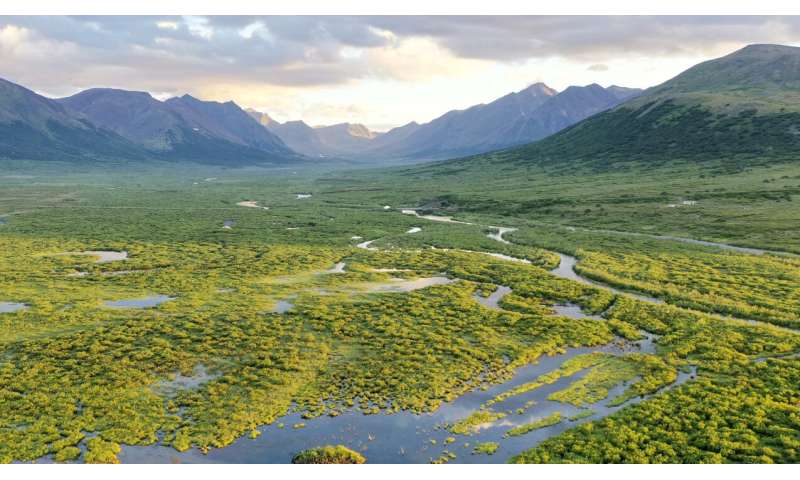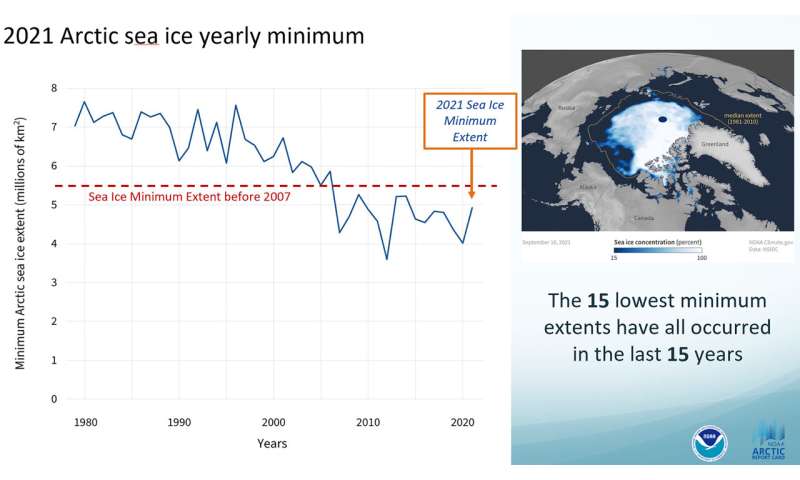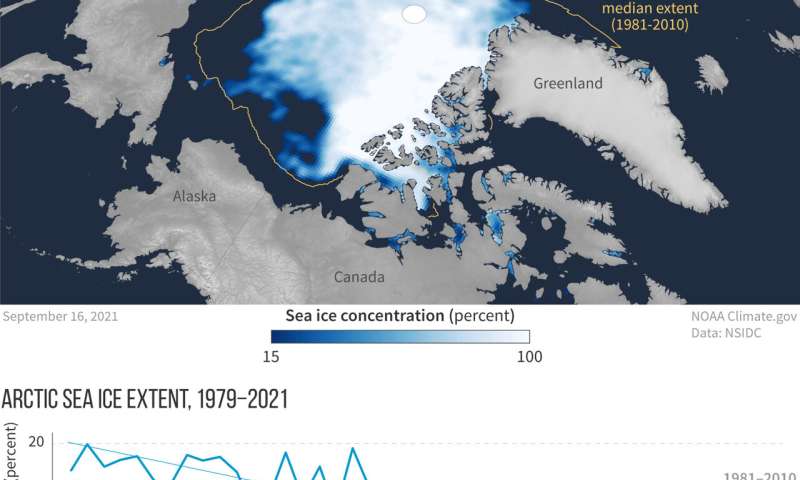Arctic Report Card: Climate change transforming Arctic into 'dramatically different state'

NOAA's 2021 Arctic Report Card documents the numerous ways that climate change continues to fundamentally alter this once reliably-frozen region, as increasing heat and the loss of ice drive its transformation into a warmer, less frozen and more uncertain future.
This year's Arctic Report Card is the 16th annual volume of original, peer-reviewed environmental observations and analysis that documents rapid and dramatic shifts in weather, climate, terrestrial and oceanic conditions in the circumpolar region. Compiled by 111 scientists from 12 nations, it was released today during a virtual press conference hosted by the American Geophysical Union during its fall meeting in New Orleans, Louisiana.
"The Arctic Report Card continues to show how the impacts of human-caused climate change are propelling the Arctic region into a dramatically different state than it was in just a few decades ago," said NOAA Administrator Rick Spinrad, Ph.D. "The trends are alarming and undeniable. We face a decisive moment. We must take action to confront the climate crisis."
The Arctic Report Card is organized into three sections. Vital Signs provides annual updates on seven topics: Surface Air Temperature; Terrestrial Snow Cover; Greenland Ice Sheet; Sea Ice; Sea Surface Temperature; Arctic Ocean Primary Productivity; and Tundra Greenness. Other Indicators explore topics that are updated periodically. Frostbites report on new and emerging issues, and topics that relate to long-term scientific observations in the Arctic.
-

The minimum sea ice extent measured in September didn’t set a record, but was still significantly below the long-term average. More concerning: the amount of older, multiyear ice was the second lowest since 1985. Credit: Climate.gov -

The year 2020 in the Arctic saw the 7th warmest air temperature in the instrumental record. The top image depicts the departure from the average temperature across the Arctic in 2020, with redder colors showing areas of greater warmth. The bottom half of this graphic shows how Arctic air temperatures varied from global temperatures since 1900. Credit: Climate.gov -

(top) Sea ice concentration on September 16, 2021, the day of the annual minimum extent. The yellow line shows the 1981–2010 median extent: half of years were smaller and half were larger. (bottom) Yearly Arctic sea ice extent at summer minimum in September and winter maximum in March from 1979–2021. The summer minimum ice extent is decreasing more rapidly than the winter maximum. Credit: NOAA Climate.gov map, based on data from the National Snow and Ice Data. Graph adapted from 2021 Arctic Report Card
Some of this year's significant findings include:
- The October-December 2020 period was the warmest Arctic autumn on record dating back to 1900. The average surface air temperature over the Arctic this past year (October 2020-September 2021) was the 7th warmest on record. The Arctic continues to warm more than twice as fast as the rest of the globe.
- The snow-free period across the Eurasian Arctic during summer 2020 was the longest since at least 1990. June 2021 snow cover in Arctic North America was below the long-term average for the 15th consecutive year. June snow cover in Arctic Europe has been below average 14 of the last 15 years.
- Following decades of relative stability, the Greenland ice sheet has now lost mass almost every year since 1998, with record ice loss in 2012 and 2019. In August, rainfall was observed at the Greenland ice sheet's 10,500-foot summit for the first time ever.
- The volume of post-winter sea ice in the Arctic Ocean in April 2021 was the lowest since records began in 2010. The amount of older, biologically important multiyear sea ice at the end of summer 2021 was the second-lowest since records began in 1985.
- The total extent of sea ice in September 2021 was the 12th lowest on record. All 15 of the lowest minimum extents have occurred in the last 15 years. The substantial decline in Arctic ice extent since 1979 is one of the most iconic indicators of climate change.
- The loss of sea ice has enabled shipping and other commercial and industrial activities to push deeper into the Arctic, in all seasons, resulting in more garbage and debris collecting along the shore and more noise in the ocean, which can interfere with the ability of marine mammals to communicate.
- Some of the fastest rates of ocean acidification around the world have been observed in the Arctic Ocean. Two recent studies indicate a high occurrence of severe dissolution of shells in natural populations of sea snails, an important forage species, in the Bering Sea and Amundsen Gulf.
"The Arctic story is a human story," said Twila Moon, an Arctic scientist with the National Snow and Ice Data Center, and one of three editors of the 2021 Arctic Report Card. "We all have a role to play in creating the best possible outcomes for the region, its residents and all the citizens of the globe who depend on the Arctic as a critical component of our Earth system."
More information:
Arctic Report Card: Update for 2021: Rapid and pronounced warming continues to drive the evolution of the Arctic environment. arctic.noaa.gov/Report-Card/Report-Card-2021
Provided by NOAA Headquarters